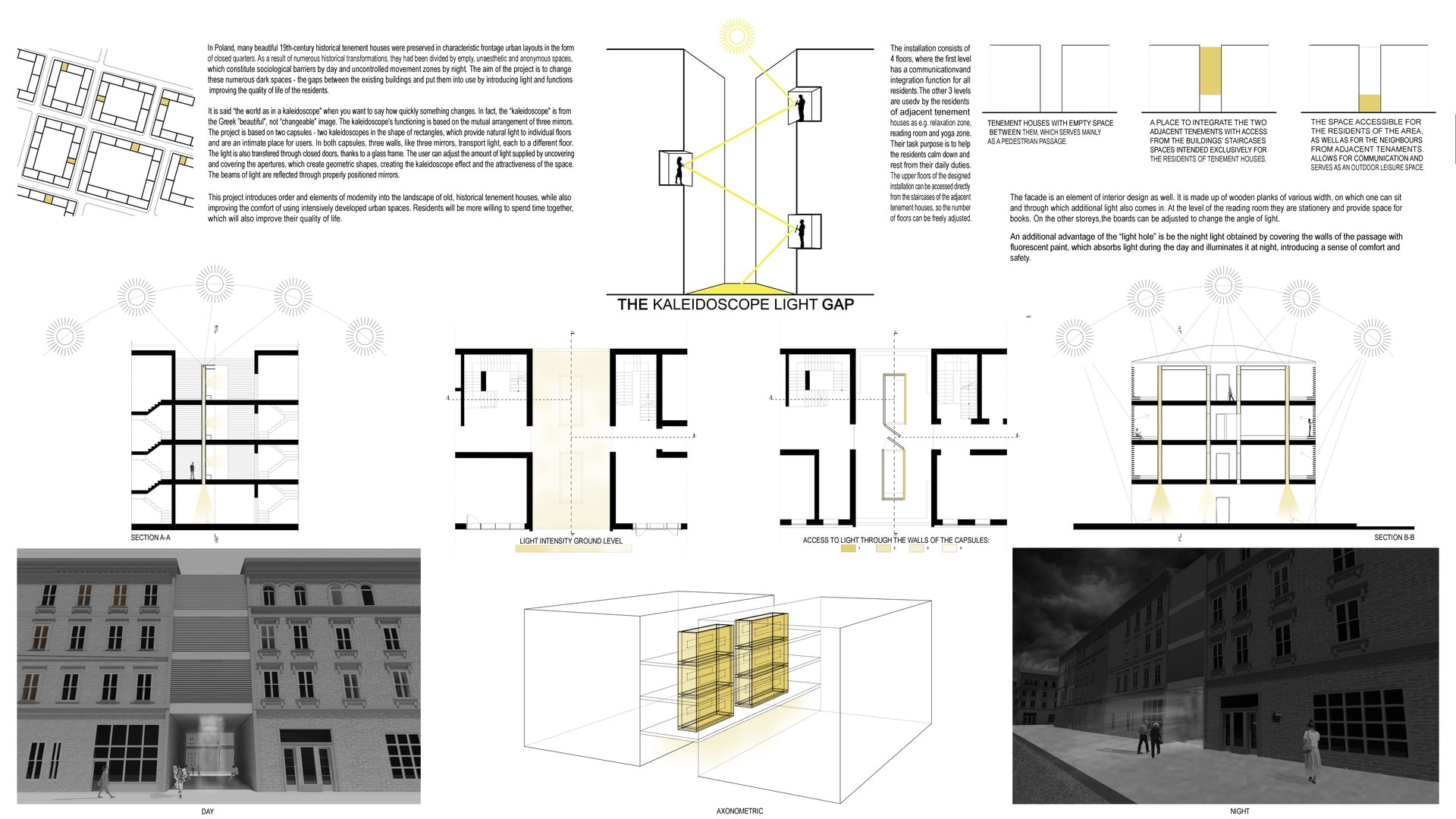Project Description
In Poland, many beautiful 19th-century historical tenement houses were preserved in characteristic frontage urban layouts in the form of closed quarters. As a result of numerous historical transformations, they had been divided by empty, unaesthetic and anonymous spaces, which constitute sociological barriers by day and uncontrolled movement zones by night. The aim of the project is to change these numerous dark spaces - the gaps between the existing buildings and put them into use by introducing light and functions improving the quality of life of the residents. The installation consists of 4 floors, where the first level has a communication and integration function for all residents. The other 3 levels are used by the residents of adjacent tenement houses as e.g. relaxation zone, reading room and yoga zone. Their task purpose is to help the residents calm down and rest from their daily duties. The upper floors of the designed installation can be accessed directly from the staircases of the adjacent tenement houses, so the number of floors can be freely adjusted. It is said “the world as in a kaleidoscope" when you want to say how quickly something changes. In fact, the “kaleidoscope" is from the Greek ”beautiful", not “changeable" image. The kaleidoscope's functioning is based on the mutual arrangement of three mirrors. Our project is based on two capsules - two kaleidoscopes in the shape of rectangles, which provide natural light to individual floors and are an intimate place for users. In both capsules, three walls, like three mirrors, transport light, each to a different floor. The light is also transfered through closed doors, thanks to a glass frame. The user can adjust the amount of light supplied by uncovering and covering the apertures, which create geometric shapes, creating the kaleidoscope effect and the attractiveness of the space. The beams of light are reflected through properly positioned mirrors. An additional advantage of the “light hole” is be the night light obtained by covering the walls of the passage with fluorescent paint, which absorbs light during the day and illuminates it at night, introducing a sense of comfort and safety. The facade is an element of interior design as well. It is made up of wooden planks of various width, on which one can sit and through which additional light also comes in. At the level of the reading room they are stationery and provide space for books. On the other storeys, the boards can be adjusted to change the angle of light. This project introduces order and elements of modernity into the landscape of old, historical tenement houses, while also improving the comfort of using intensively developed urban spaces. Residents will be more willing to spend time together, which will also improve their quality of life.
